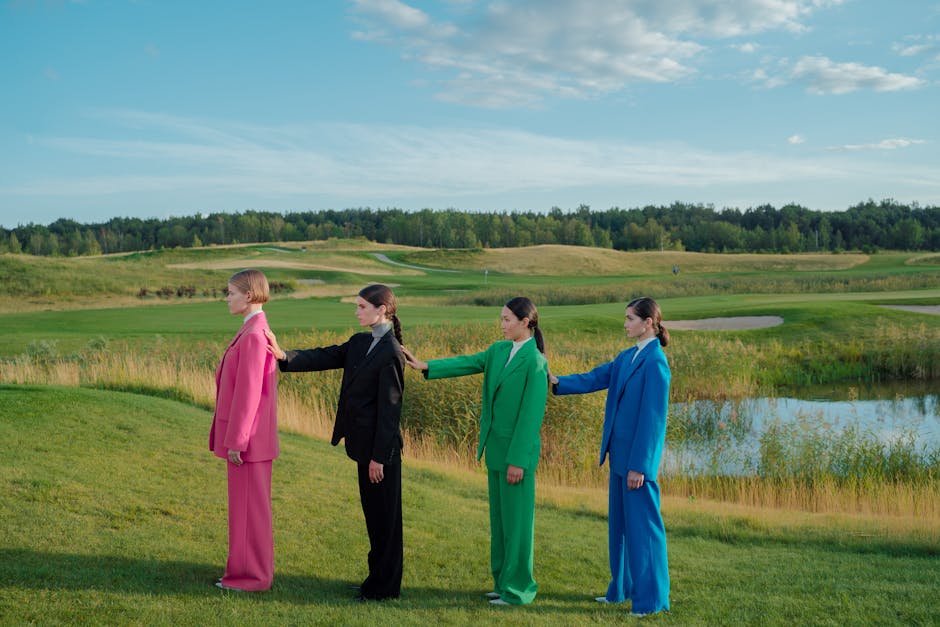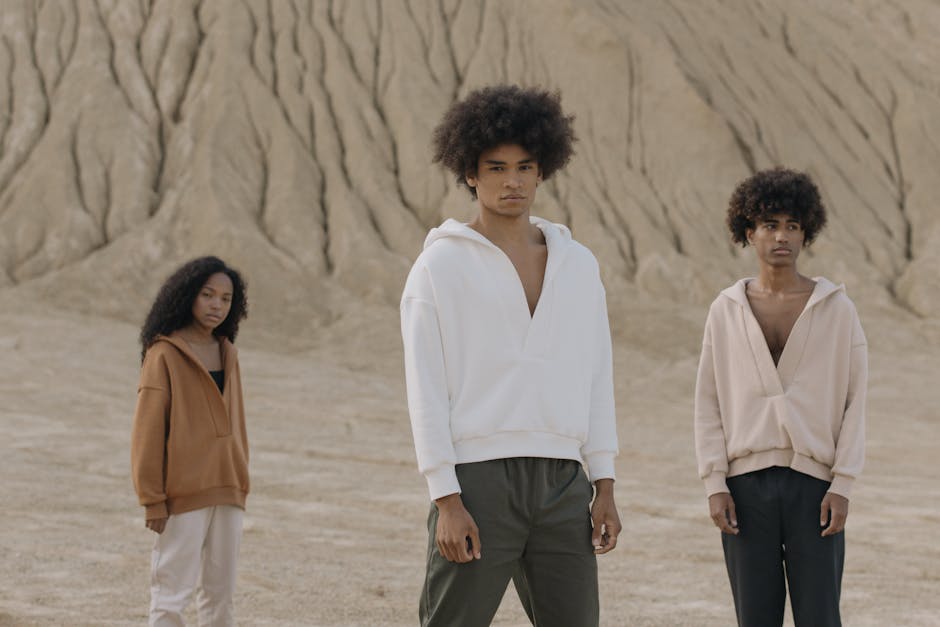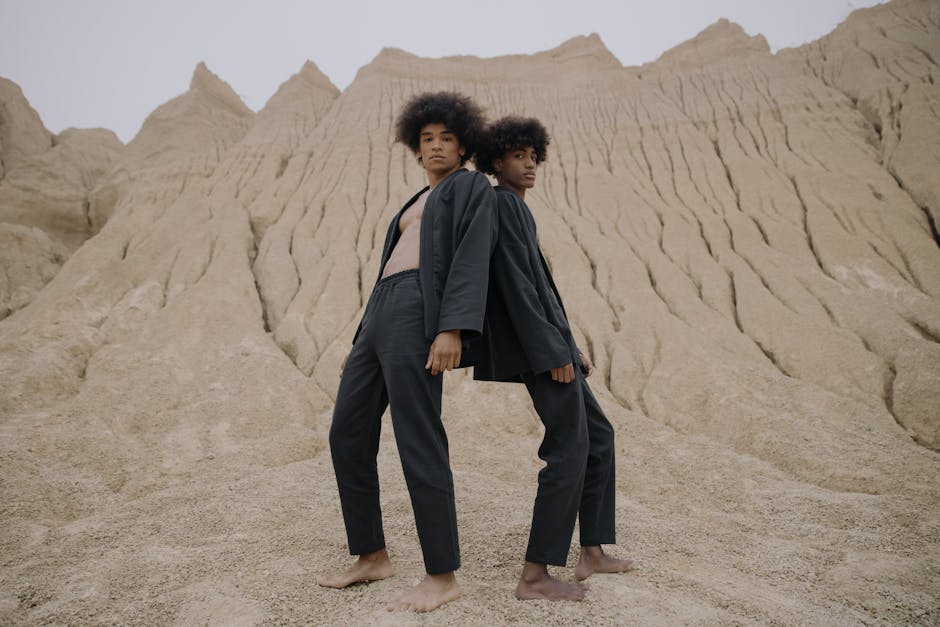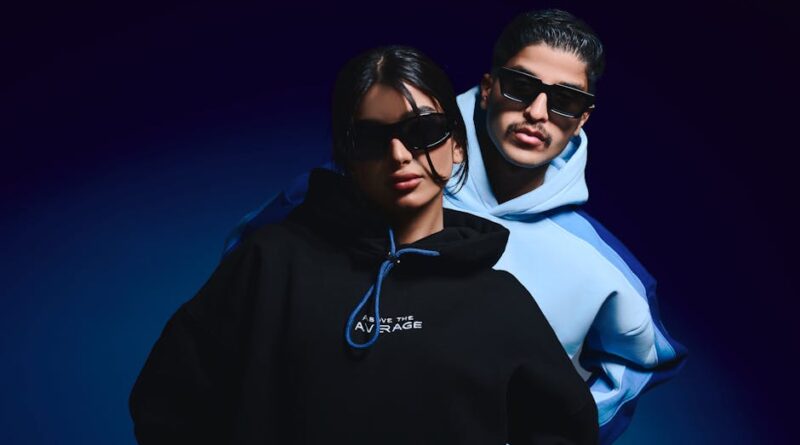Ethical Trendsetting Models: Pioneering Change in the Fashion Industry
When we think of the fashion industry, we often envision glamorous runways, designer labels, and the latest trends showcased in glossy magazines. However, behind the glitz and glamour lies a darker reality of unethical labor practices, environmental degradation, and unsustainable supply chains. In recent years, there has been a growing awareness and demand for ethical fashion, leading to the emergence of trendsetting models that prioritize sustainability, transparency, and social responsibility.
What exactly are ethical trendsetting models, and how are they reshaping the fashion landscape? In this comprehensive guide, we will delve into the intricacies of ethical fashion, explore the key principles of ethical trendsetting models, and examine the impact they are having on the industry and beyond.
The Rise of Ethical Fashion

Over the past few decades, the fashion industry has come under increasing scrutiny for its detrimental impact on the environment and communities. From the exploitation of garment workers in developing countries to the massive waste generated by fast fashion, the industry’s practices have raised serious ethical concerns. In response to these challenges, a new wave of designers, brands, and consumers have been championing ethical fashion as a more sustainable and responsible alternative.
Ethical fashion encompasses various principles, including fair labor practices, eco-friendly materials, animal rights, and transparent supply chains. At the heart of ethical fashion lies the commitment to minimizing harm and maximizing positive impact throughout the entire lifecycle of a garment, from design and production to consumption and disposal.
The Core Principles of Ethical Trendsetting Models

As the demand for ethical fashion continues to grow, a new breed of trendsetting models has emerged, setting the standard for sustainability and social responsibility in the industry. These models are characterized by their adherence to the following core principles:
1. Sustainable Sourcing

One of the key pillars of ethical trendsetting models is the use of sustainable and eco-friendly materials. This includes organic cotton, hemp, bamboo, and recycled fabrics, which have a lower environmental impact compared to conventional materials. By opting for sustainable sourcing, brands can reduce their carbon footprint, minimize waste, and contribute to the preservation of natural resources.
For example, Patagonia, a renowned outdoor clothing company, has been a pioneer in sustainable sourcing. They use recycled polyester in their garments, offer repair services to extend the lifespan of their products, and are transparent about their supply chain practices. By prioritizing sustainability, Patagonia has not only built a loyal customer base but has also inspired other brands to follow suit.
2. Fair Labor Practices

Ethical trendsetting models prioritize the well-being of garment workers by ensuring fair wages, safe working conditions, and respect for labor rights. This involves partnering with factories that uphold labor standards, conducting regular audits to monitor compliance, and empowering workers through training and education programs.
3. Transparency and Traceability
Transparency and traceability are crucial aspects of ethical fashion, as they enable consumers to make informed choices about the products they purchase. Ethical trendsetting models are committed to disclosing information about their supply chain, production processes, and environmental impact. By being transparent, brands can build trust with consumers and demonstrate their commitment to ethical practices.
For instance, Everlane, a popular clothing brand, is known for its radical transparency. They provide detailed information about the factories where their garments are made, including photos, videos, and production costs. This level of transparency not only sets Everlane apart from traditional fashion brands but also empowers consumers to support ethical and sustainable practices.
4. Circular Economy Initiatives
In the quest for a more sustainable fashion industry, ethical trendsetting models are embracing circular economy initiatives that prioritize longevity, repairability, and recyclability. This includes designing durable products, offering repair services, and implementing take-back programs to recycle old garments into new ones.
One notable example is the Swedish brand H&M, which launched its garment collection program to collect old clothes from customers and recycle them into new textiles. By closing the loop on textile waste, H&M is working towards a more circular and sustainable fashion system.
5. Diversity and Inclusivity
Ethical trendsetting models are also championing diversity and inclusivity in the fashion industry by celebrating different body types, ethnicities, and identities. This includes casting a diverse range of models in their campaigns, offering inclusive sizing options, and collaborating with marginalized communities to create empowering and culturally relevant collections.
Fenty Beauty, a cosmetics brand launched by Rihanna, has been a trailblazer in championing diversity and inclusivity. They offer a wide range of foundation shades to cater to different skin tones, feature models of various ethnicities in their campaigns, and promote a message of self-love and empowerment. By embracing diversity, Fenty Beauty has set a new standard for inclusivity in the beauty industry.
The Impact of Ethical Trendsetting Models
The rise of ethical trendsetting models has had a profound impact on the fashion industry, influencing not only how products are made and consumed but also how businesses operate and how consumers perceive fashion. Here are some key ways in which ethical trendsetting models are shaping the future of fashion:
1. Shifting Consumer Preferences
As consumers become more conscious of the social and environmental impact of their purchasing decisions, there has been a noticeable shift towards ethical fashion. Ethical trendsetting models are driving this change by offering transparent and sustainable alternatives that resonate with ethical consumers. By prioritizing values such as sustainability, fairness, and inclusivity, these models are attracting a new generation of consumers who are willing to pay a premium for ethically made products.
2. Influencing Industry Practices
By setting the standard for ethical fashion, trendsetting models are influencing industry practices and challenging traditional business models. Brands that embrace ethical principles are not only differentiating themselves in a crowded market but also inspiring others to follow suit. This has led to a ripple effect within the industry, with more brands incorporating sustainability, transparency, and social responsibility into their core values.
3. Redefining Success Metrics
Ethical trendsetting models are redefining success metrics in the fashion industry by prioritizing impact over profit. Instead of focusing solely on revenue and market share, these models measure success based on their social and environmental contributions. By aligning their business goals with ethical values, brands can create a more sustainable and meaningful impact on society and the planet.
Expert Opinions: The Future of Ethical Trendsetting Models
To gain further insights into the future of ethical trendsetting models, we reached out to industry experts for their perspectives on the evolving landscape of ethical fashion.
According to Sarah Ditty, Global Policy Director at Fashion Revolution, “Ethical trendsetting models are paving the way for a more sustainable and equitable fashion industry. By prioritizing transparency, fairness, and environmental stewardship, these models are setting a new standard for responsible business practices.”
Dr. Kate Fletcher, a sustainability expert and author of “Craft of Use: Post-Growth Fashion”, believes that ethical trendsetting models are reshaping the fashion industry from within. “By challenging the status quo and reimagining the way fashion is produced, consumed, and valued, these models are driving a much-needed shift towards a regenerative and restorative fashion system.”
Conclusion: Embracing Ethical Fashion for a Better Future
As we reflect on the transformative power of ethical trendsetting models, it becomes evident that the future of fashion lies in sustainability, transparency, and social responsibility. By embracing ethical fashion, we can create a more equitable, ethical, and environmentally conscious industry that benefits both people and the planet.
Whether it’s through sustainable materials, fair labor practices, transparent supply chains, or inclusive designs, ethical trendsetting models are leading the way towards a brighter future for fashion. As consumers, we have the power to support these models, demand accountability from brands, and drive positive change in the industry. Together, we can redefine fashion not only as a form of self-expression but also as a force for good in the world.
So, let’s join hands with ethical trendsetting models, embrace sustainable fashion, and pave the way for a better futureone garment at a time.




